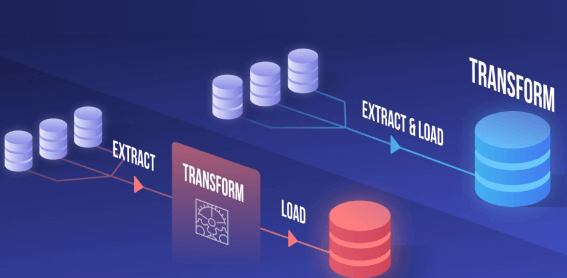BENEFITS OF ETL

ETL, or Extract, Transform, and Load, is a process that is used to collect, transform, and load data from various sources into a centralized data warehouse or data lake. Bing Ads ETL (Extract, Transform, Load) refers to the process of extracting data from Bing Ads, transforming it into a format that can be used for analysis or reporting, and then loading it into a destination system such as a data warehouse or business intelligence tool. This process allows businesses to gain insights and make data-driven decisions based on their Bing Ads data. By automating the ETL process, businesses can save time and improve data quality, allowing them to make more informed decisions about their Bing Ads campaigns. Thus, below are some of the benefits of using the ETL process.
- Data Consolidation: One of the main benefits of ETL is that it allows for the consolidation of data from multiple sources into a single location, making it easier to access, analyze, and use. This can include data from various departments within an organization, as well as external data sources such as social media, customer databases, and other third-party providers. With data consolidated in one place, organizations can have a comprehensive view of their business operations, which can be used to improve decision-making and strategic planning.
- Data Quality Improvement: ETL helps to improve the quality of data by identifying and removing duplicates, correcting errors and inconsistencies, and standardizing data format. This ensures that the data used for analysis and decision-making is accurate and reliable. For example, ETL can standardize the format of addresses, phone numbers, and other contact information, which can improve the accuracy of customer data and reduce the risk of errors. Additionally, ETL can identify and remove duplicates, which can save storage space and reduce the risk of errors.
- Data Governance: ETL provides a framework for data governance, which includes the management of data access, security, and compliance. This ensures that data is used in an appropriate and controlled manner, and that sensitive information is protected. For example, Saras Analytics uses ETL to ensure that only authorized users have access to sensitive data, and that data is not shared with unauthorized parties. Additionally, ETL can be used to ensure compliance with data protection regulations such as GDPR.
- Data Integration: ETL enables the integration of data from different systems and platforms, which allows for a more complete view of the data. This can improve the efficiency of business processes, as well as the ability to make better-informed decisions. For example, ETL can be used to integrate data from an e-commerce platform with data from a customer relationship management (CRM) system, which can help organizations track customer behavior and preferences. Additionally, ETL can be used to integrate data from various departments within an organization, such as sales, marketing, and finance, which can help organizations track performance and identify opportunities for improvement.
- Automation: ETL processes can be automated, which can save time and resources, and reduce the risk of errors. This can also allow organizations to focus on more strategic activities, such as analyzing data and making data-driven decisions. For example, ETL can be used to automate the process of extracting data from various sources, transforming the data into a standardized format, and loading the data into a data warehouse or data lake.
- Time-saving: ETL processes can save a lot of time when compared to manual data management and integration techniques. ETL tools can extract, transform, and load data quickly and efficiently, allowing organizations to spend more time on data analysis and decision-making. For example, ETL can be used to automate the process of extracting data from various sources, which can save time and resources compared to manual data extraction. Additionally, ETL can be used to automate the process of transforming data, which can save time and resources compared to manual data transformation.
- Scalability: ETL is highly scalable, which means that it can handle a large volume of data from various sources. This makes it well-suited for organizations that are growing and need to manage increasing amounts of data. For example, ETL can be used to extract data from multiple sources, such as social media, customer databases, and other third-party providers, which can help organizations manage increasing amounts of data. Additionally, ETL can be used to handle a large volume of data, such as big data, which can help organizations gain valuable insights from large sets of data.
- Cost-effective: ETL can be a cost-effective solution for managing data, especially when compared to manual data management and integration techniques. ETL tools can automate many processes and reduce the need for manual labor, which can save money in the long run. Additionally, ETL can be used to manage data from various sources, which can reduce the need for costly data integration projects. Furthermore, ETL can improve the quality of data, which can reduce the risk of errors and improve the efficiency of business processes, resulting in cost savings.
- Real-time Data Processing: ETL allows for real-time data processing, which means that data can be extracted, transformed, and loaded as soon as it becomes available, rather than waiting for a scheduled batch process. This allows organizations to quickly access and analyze data, which can be particularly useful for organizations that need to make quick decisions or respond to rapidly changing circumstances.
- Flexibility: ETL is flexible, which means it can be customized to suit the specific needs of an organization. For example, ETL can be used to extract data from various sources, such as databases, flat files, and APIs, and can be configured to transform data into a format that is suitable for analysis and reporting. Additionally, ETL can be integrated with other tools and technologies, such as data visualization and machine learning tools, which can help organizations gain valuable insights from their data.
In conclusion, ETL is a powerful tool that can greatly improve the efficiency and effectiveness of data management for businesses and organizations. It allows for data consolidation, improves data quality, provides a framework for data governance, enables data integration, automates processes, saves time, is scalable, cost-effective, allows for real-time data processing, and is flexible. By using ETL, organizations can gain a more complete view of their data, make better-informed decisions, and improve their overall performance.







